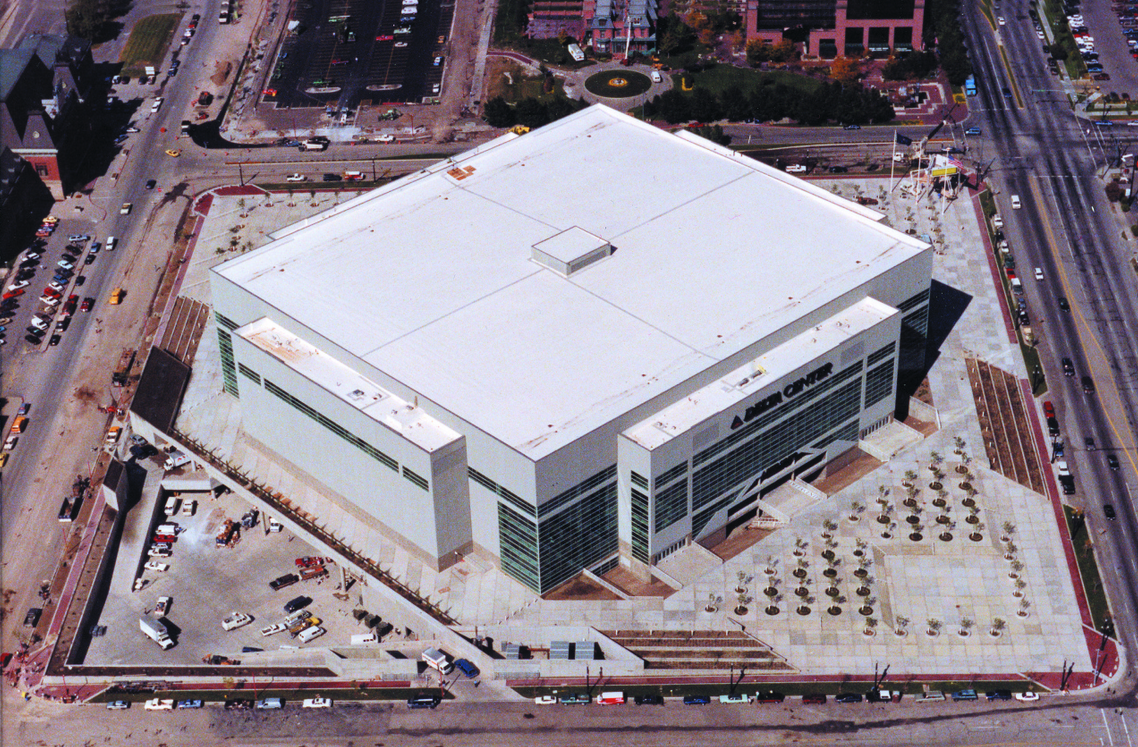Salt Lake City’s recent boom in downtown apartment living echoes a similar heyday that took place 100 years ago. Between 1910 and 1940 the city’s population increased from 92,000 to 140,000 and investments in amenities like streetcars and paved sidewalks fueled a bustling business district. Construction of the city’s first apartment buildings soon following and were completed in two general phases: the first from 1904 through the start of World War I, and then another flurry from the early 1920s until World War II.
These new urban dwellings boasted luxuries that many rural Utahns had never before experienced: innovative frills such as “disappearing” Murphy beds, Frigidaire refrigerators, electric ranges and on-site laundry machines. The interiors were upscale for the time, with glass interior doors, hardwood floors, casement windows, chandeliers and tiled bathrooms. “There’s always somebody home in an apartment,” advertised the Apartment House Association of Utah. “It’s nice to return at night to well-lighted corridors and know that help if needed can be quietly summoned.”
The early apartment buildings were designed as either walk-ups with one or two entrances on each landing or as a double-loaded corridor plan with multiple entrances along a central hall. Architects took advantage of Salt Lake’s deep blocks, fitting the long, narrow apartment buildings on lots where a home and a garden or corral where located previously. After growing up on farms or pioneer homes, downtown apartment living represented an exciting new approach to residential life that everyone from young married couples to recent immigrants were interested in. Fortunately, many of these beautiful vintage apartment buildings still line our streets, reminding of us of the elegance of a bygone era.
The Pauline apartment building at 278 E. 100 South was one of the first to be built in 1904, closely followed by the La France at 246 W. 300 South and the twin buildings of the Altadena and Sampson, at the corner of 300 South and 300 East.
Walk down 300 East today and you will see other lovely historic apartment buildings, with their leaded glass windows, Colonial Revival balconies and ornate entrances. Keep strolling over to 235 S. 200 East and you’ll happen upon the Woodruff apartments, a luxury for the time it was built in 1908. “The building will be steam-heated, you will have hot water ready at all times of day or night, as well as free janitor and night watchman service, telephone and gas range … you will save on coal bills, water, telephone, streetcar fares and other incidentals, will reduce your costs of living, and you will have all the comforts besides,” read a 1908 newspaper ad for the Woodruff. It advertised specifically to “young men looking for desirable apartments close to their work.” Abe Gross and his young wife, Vera, lived in Unit 60 at the Woodruff in 1930 when they first moved to Salt Lake from Chicago. They spoke Polish and English; Abe worked as a truck driver and cattle buyer. Sadly, Abe was killed in a truck accident in 1935 shortly after their son was born, after which Vera moved back to Chicago.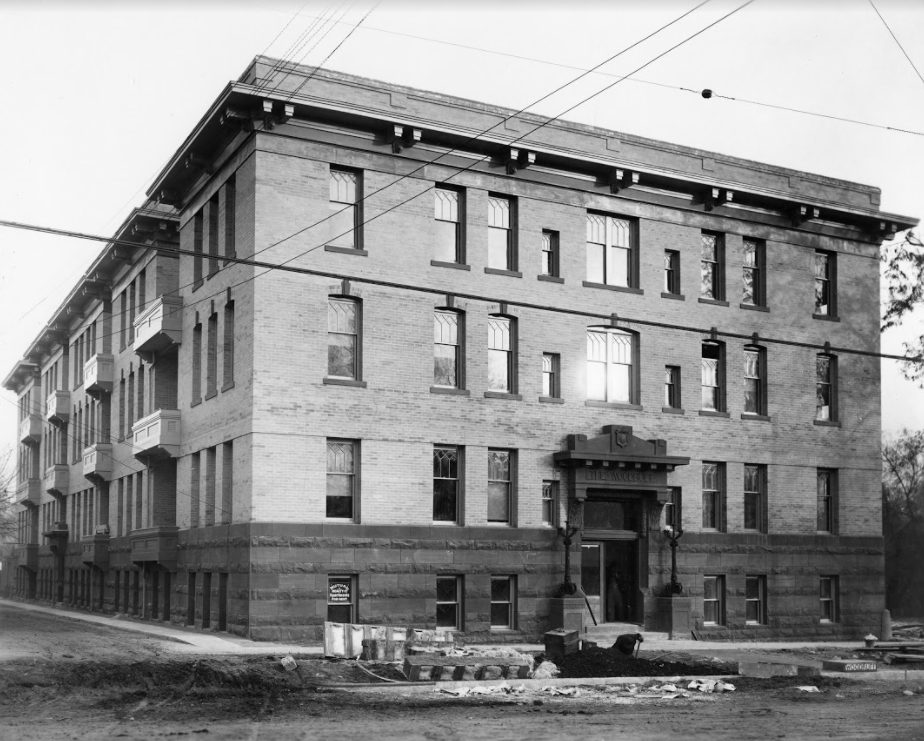

The decorative elements of the turn-of-the-century apartments are striking. Most have the original light posts and fixtures, doors and tiled entries. Note the French door balconies, intricate brick patterns and neon sign at the Embassy Arms, 120 S. 300 East. Venture over to the Piccardy at 115 S. 300 East and you will find a Jacobethan Revival style with twisting columns and large finials, arched windows and an imposing sign over the door. Often the buildings were given creative names to convey sophisticated style, such as the Belvedere (29 S. State), the Hollywood (204 East 100 South) and the Silverado (243 South 300 East).
The Los Gables, built in 1929, occupies nearly half a block at 135 S. 300 East, making it one of the largest early complexes. Note the Moorish arched entrances, stonework and unusual timbering detail around some of the upper windows. Newly married couple Larry and Rosalee Hunt lived in Unit 605 during 1959 when they came from St. George so Larry could serve in the Army at Fort Douglas. The rooms were advertised as “an address to be proud of” with “reasonable monthly rents” of $40.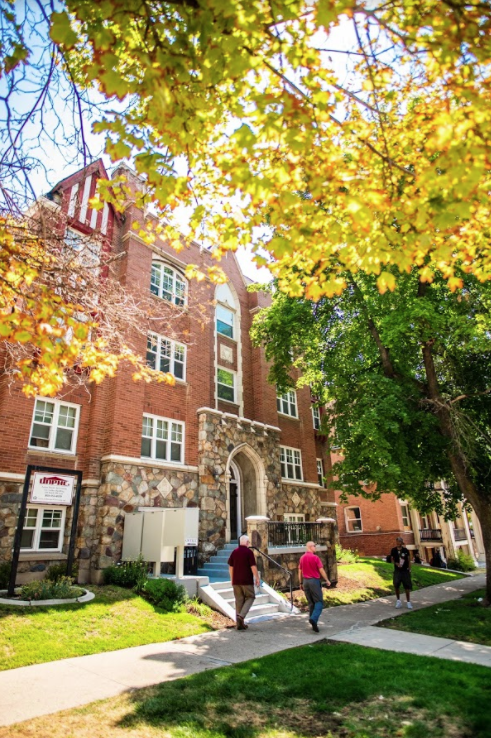
The investors who started Salt Lake’s first apartment boom included local families such as the Coveys, Downings and Sampsons, along with out-of-state financers from California. Several prominent builders constructed most of Salt Lake City’s original apartment buildings, such as W.C.A. (Andy) Vissing, who came to Salt Lake City from Denmark as a 14-year-old, formed his own contracting company and made his fortune by building more than 20 apartment buildings over the course of his career.
The Covey family, led by entrepreneur brothers A.A. Covey, S.M. Covey and H.T. Covey, built apartments to last. All of their early-twentieth-century buildings are still standing and used today—the La France, Hillcrest, New Hillcrest, Kensington, Buckingham and Covey. The Covey Apartments on South Temple were considered the most elegant of the group, even featuring a passenger elevator to serve the seven floors. As you walk by the Covey entrance at 239 East S. Temple, relish the brickwork, gargoyles and wrought-iron balconies. Imagine the first tenants moving into the nearby Hillcrest apartments on First Avenue with its windowed sleeping porches, beautifully-landscaped interior courtyard and private garages out back. The Coveys expected their on-site managers to do everything from mopping hallway floors to delivering ice to residents’ kitchen iceboxes.

With the advent of The Depression, funding for new construction evaporated. And then, after World War II residents wanted cozy bungalows in the suburbs, which were suddenly more affordable with federal loans. Downtown apartment construction declined further and the occupancy patterns changed dramatically.
By the turn of the twenty-first century, some of these grand old buildings became stylish condominiums, while others serve as low-income or affordable housing. Owners are taking care to maintain the unique architectural features and advertise the historic beauty of the structures. At least 73 of the downtown apartment buildings are listed on the National Register of Historic Places. In 2014, the city adopted design guidelines for the buildings to emphasize their “distinctive urban scale and presence.” The more than 100 historic apartment buildings still in use today are a vivid reminder of the boldness and style with which Salt Lake City entered the twentieth century.
This is the Community's Place
Whether you are a fan of country music, basketball, pop divas, big truck shows or family friendly spectacles, downtown Salt Lake City has a gathering place. More than 1.8 million people annually find the best in sports and entertainment at EnergySolutions Arena, which began construction 25 years ago as the most high-tech, state-of-the-art arena in a five-state region. But after a quarter of a century the venue is showing a little gray hair, and owners of the arena – the Larry H. Miller Group of Companies – are taking steps to ensure its world-class status and its desire to continue serving the community.
“The bones of this building are really strong,” says Steve Starks, president of Miller Sports & Entertainment. “It’s timeless in a way because the arena has been so well taken care of through the years. However, it is also time to explore options on how to invest in a type of facility that could house a championship-caliber team and provide best-in-class guest experiences. We have had moments of brilliance occur in the arena, but there are more memories to be made here.”

As the home of the Utah Jazz, the downtown arena has been the professional sports heartbeat of the community. Its emergence along West Temple has anchored an integral city hub, spawning new businesses, restaurants, hotels and shopping, light-rail connectors, and a complementary facility to the convention center. Its rising a quarter of a century ago to a gathering place for first-class entertainment in Utah was an act of personal sheer will.
By the summer of 1990, Larry and Gail Miller knew that purchasing the NBA’s Utah Jazz wasn’t enough to keep the team in the state. At the time, they were playing in the now defunct Salt Palace arena, which seated just more than 12,000 spectators. From conversations with former NBA Commissioner David Stern, the Millers knew that they needed a 20,000-seat arena with luxury suites to keep their small market team afloat.
In typical Miller fashion, Larry and Gail had a vision; one that no one believed could come to fruition, but with Larry’s relentless drive, they powered on. Larry and Gail rarely did things just for themselves; they usually had a broader vision in mind. They decided that they would go after an undeveloped, dilapidated block on what was then the far west side of downtown and work with the city’s redevelopment agency to bring a brand new, multi-use, 20,000-seat arena to Salt Lake City ahead of its time. They knew, that if they built it, Jazz fans, events, concerts and crowds would come.
“Larry and Gail always believed in giving back to the community,” said Larry H. Miller Group of Companies CEO, Clark Whitworth. “Putting together the financing for the arena was one of the hardest deals we ever did in our more than 20 years of working together. We learned a lot. If not for Larry’s pure passion for the project, Gail’s unwavering support, and what the project could do for this community, I’m not sure we could have pulled it off.”
By May of 1990, the Millers had secured the approvals and funds to build the arena. Their desire was to have the doors open for the first game of the 1991-92 Jazz season. This left only 15 months to build a nearly the venue. Because of this, the facility was being designed as it was being built, in phases.
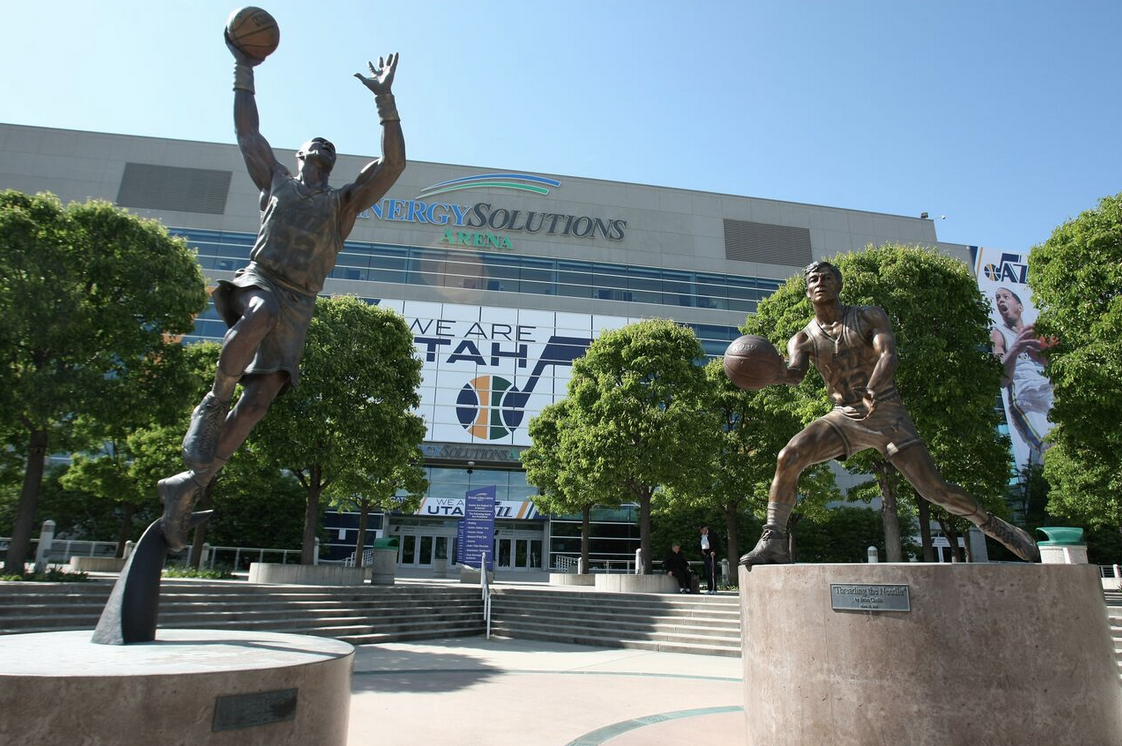
At the time, they also owned the International Hockey League’s Salt Lake Golden Eagles. The Eagles game against the Peoria Rivermen on Oct. 16, 1991 was the first public event hosted in the brand-new arena. The first headliner concert to play the location was Oingo Boingo on Oct. 24, 1991.
Mark Powell, vice president of events and general manager for the venue, recalls, “We opened the doors to the arena in October of 1991 to a sold-out Oingo Boingo concert. Since then, the facility has hosted nearly every major touring concert in the world including U2, the Rolling Stones and Garth Brooks. ,’ he said. “One of my favorite memories is from the 1997 NBA Playoffs. Tina Turner was on our stage while the Jazz were playing in Houston against the Rockets and John Stockton hit ‘the shot’ that sent us to the NBA Finals that season. The crowd roared and Ms. Turner could not figure out what was happening as the adulation was not in timing with her run of show.”
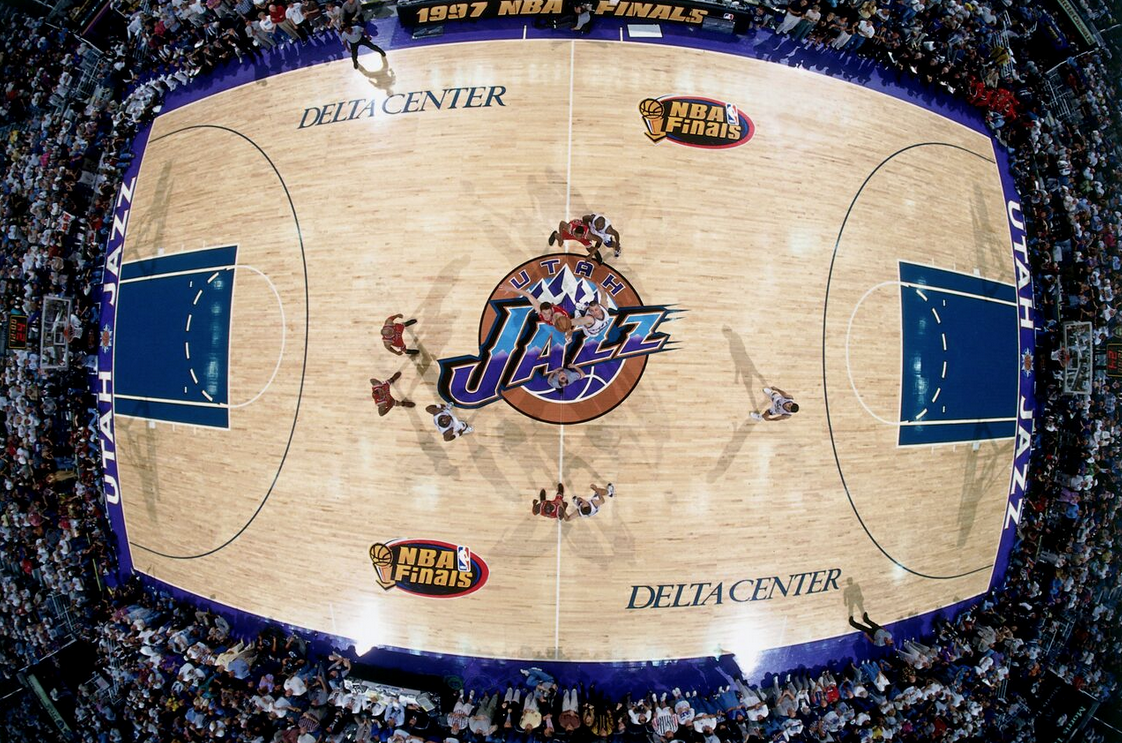
In 1993, the Utah Jazz hosted the NBA All-Star Game in Salt Lake City. Team President Randy Rigby recalls a special moment that not only brought players together, but also families and the community.
“I will always remember seeing the arena packed with not only NBA fans, but Jazz fans as well. At the end of the game, John and Karl (Malone) were holding up the co-MVP trophy with their small children in tow,” Rigby said. “This moment captured the spirit of Salt Lake and created an iconic memory for not only the Jazz basketball family, but for this community, which prides itself on being so family friendly as well.”
During the 2002 Olympic Winter Games, the venue was renamed the Salt Lake Ice Center, for the Games. The surprise gold-medal figure skating performance of American Sarah Hughes and the double-medal breakout of Apolo Anton Ohno in short track speed skating are among the many signature sports moments at the arena.

“Taking over the venue for 20 plus days in the middle of the NBA season was a remarkable feat. Without the generosity of Larry and Gail Miller, we would have not been able to make it happen,’” recalls Lori Kun, the sport manager for the Salt Lake Organizing Committee. “Many of the arena’s guest services staff, including greeters, ushers, and ticket takers volunteered their time for this once-in-a-lifetime experience. Larry personally spoke at our volunteer training session and it was incredibly emotional and inspirational for us all.”
Since the arena’s opening in 1991, 22 new facilities have been built around the league for NBA teams. Only six NBA arenas currently in use by the Golden State Warriors (1966), New York Knicks (1968), Milwaukee Bucks (1988), Sacramento Kings (1988), Detroit Pistons (1988) and Minnesota Timberwolves (1990) are older than the home of the Utah Jazz. Each of these franchises is in the process of building a new arena or implementing a significant renovation plan.
In the last five years, about $25 million has been invested into EnergySolutions Arena. With an emphasis on enhancing the fan experience, upgrades include an improved public address system, enlarged concourse entries with retail and food offerings, digital direction and concessions signage, the addition of the Legends Club, two Fanzz stores and the expansion of the main team store, and numerous energy efficiency projects. The most significant improvement was a $15 million investment prior to the 2013-14 season for the installation of a new high definition video display system and other building infrastructure. Appearing bigger than life, the center court video boards are seven times larger than their predecessor with twin, 42-foot-by-24-foot screens that run the length of the court.
The defining characteristic that brings the building its national renown is its sheer volume during Utah Jazz home games. Rigby notes, “The Jazz have a passionate and knowledgeable fan base that gives us a homecourt advantage. We have an enduring relationship with the community and sincerely appreciate the loyalty, enthusiasm and support of our fans.”
For nearly 25 years, it has been a shared experience with the community. The presence of the downtown arena has contributed to the economic vitality of the region, improved the quality of life through world-class entertainment and rallied citizens through the fandom of sports. With its 7.6 million pounds of rebar and more than 80,000 square feet of glass, the arena still has a personality that brings bright eyes and big smiles to its visitors of all ages.
